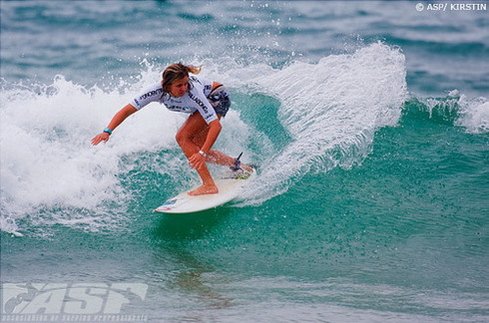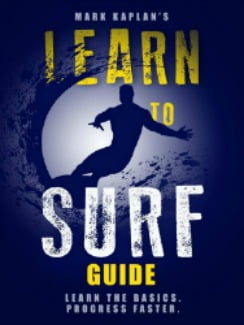When new surf students begin, their first ambition is often to learn to surf the short board. This is a noble goal and can fuel learning. The short board is at the top of the pyramid for skills.
The beginner has to prepare his body, learn techniques, and build courage to reach this destination. A year or two of consistent surfing and practice might be necessary for someone who lives near the ocean.

Basic Beginner Skills
The first techniques a beginner masters are balancing on the board, catching foam waves, learning the pop up, and riding the surf board. Each is very precise. The surfers pop up has to be quick and accurate. The body posture on the board has to be squared to the front so the surfer does not fall off on the ride to the beach.
Catching foam waves begins the timing process. The surfer spots the foam wave he wants to ride and positions himself in front of it while paddling to develop some momentum. As the wave arrives, the surfer paddles harder and gets in front of the wave. Then he can execute the pop up. The surfer rides a high volume foam board to make catching and riding foam waves easy
Moving to Real Waves
The difference with real waves is the opening for the break is only a few seconds. The surfer has to learn to position himself in this spot. The surfer spots the real wave start to form and paddles to a position where the wave comes under the board.
As the wave arc above his head, he paddles down the wave. When he has caught it, he pops up. His first move is to ride it to the beach as a beginner or bottom turn into the pocket and drive the pocket until the wave dies.
The surfer can also point the board toward the pocket after he has caught it and before he pops up to get into the pocket easier. A third way is to paddle down the wave away from the apex where the wave is not as steep and paddle into the pocket at a 45 degree angle toward the beach.
Riding Real Waves
At first, the surfer just drives the pocket. Then he learns to accelerate in the pocket by moving the nose of the board up and down the pocket with his front foot. Then he learns to do a cut back by reversing his direction on the wave to get back to the power.
All of this can be done on an 8′ soft top. In the process, the surfer is probably learning to ride bigger waves and building courage. At a point, he might decide he wants to ride a hard board. Its best to step down 6 inches in length at a time and maintain the width and thickness of 21+ inches wide and 2 3/4 inches thick.
A short board is technically 6″10 ” long, so it can take a while. This is time well spent because the shorter the board, the more difficult to paddle, the more difficult to learn the timing of the wave, and the more unstable the ride.
The surfer wants to continue to have fun in the process and not get frustrated. The slower the surfer moves to a shorter board, the better will be his strength, stamina, technique, and courage.
Learn More
My New Surfing Course in an E-Book plus Demo Video or Audio Version
Get the 18 Chapter, 7,500 word Course that can prepare you for a lesson or give you the fundamentals if you are going to try it on your own. 10 years of teaching 350 students a year has given me the insights on the most precise measures you must follow for success. This course is what I teach on the dry land and in water instruction. The Course includes a 15 minute video on my dry land and in water demonstration. Only $4.95
Buy the E-Book and start learning $2.99. Learn to Surf
Buy the Paperback on Amazon $7.95
Get Learn to Surf Course in 29 minute AUDIO. Great prep for a lesson, reviewing after a lesson, learning on your own, refreshing after not having surfed for a while. See Table of Contents. Only $7.95.

For Oceanside Surf Lessons, see the Home Page
See the Post Search Lessons Teach Fundamentals
See the Post Catching Real Surf Waves
See my Dry Land and in Water Demo video
See my other Surf site for more Posts
I have lowered the price of Courses and Books for the lock down
80 page Learn to Surf Book
![Surf Instructions Beginner to Advanced: Learn to Ride Waves by [Kaplan, Mark]](https://images-na.ssl-images-amazon.com/images/I/51HswFtoBQL.jpg)